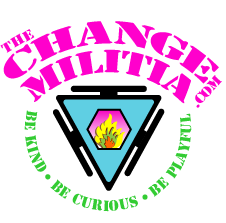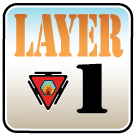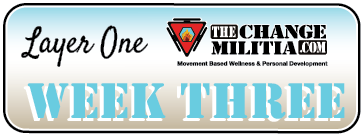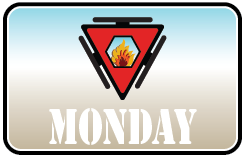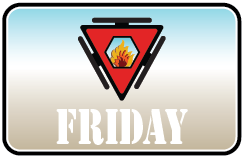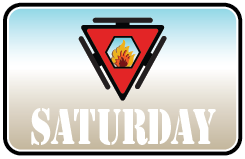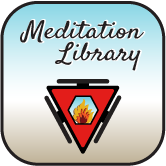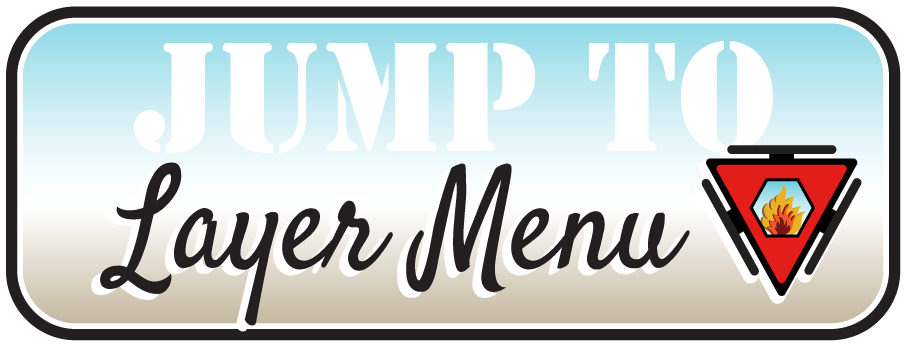
Layer One, Week Three – Sunday
- Read Week Three Concepts
- Watch Video, Read Instructions, and Practice
Sunday’s Focus
Do as many Current30’s as you can today, focusing on physical sensations, both internal and superficial. Feel for the times when you feel over-energized.
Sunday’s Concepts
Your personality is the collection of images, beliefs, labels, and habits we talked about last week. Your personality is not who you are, it is what you typically do. You go through your day allowing your subconscious mind to assess current threats and then you react in habitual ways in an subconscious desire to limit change.
When things begin to grow outside of your subconscious mind’s definition of safe, it convinces you to do something habitual to burn off the excess energy. It finds distractions, ways to diffuse your expanding energy.
They are things like sugar, alcohol, or drugs; excess food, exercise, or sleep; anger, resentment, or depression; drama, pain, or conflict. Basically, anything and everything that you typically do that doesn’t have long-term benefits is your subconscious mind trying to burn excess energy through distraction and keep you in a familiar pattern.
Layer One, Week Three – Monday
- Read Monday’s Concepts
- Practice –
Monday’s Focus
Do as many Current30’s as you can today, focusing on emotions (the labels you assign to what you are feeling). When do your emotions feel the most intense? When do they feel like you are compressing them?
Monday’s Concepts
From Jeff’s book The Discomfort of Happiness, Mastering the Art of Vitality, page 5:
Stimuli are energy. Energy fuels vitality. Too much stimuli triggers your mind into judging your present vitality as undesirable. Your mind connects undesirable with unsafe and looks to regain familiarity. When your mind recognizes familiar patterns of expansion (vitality), it will begin to resist proactively. It encourages you to be stubborn, withdrawn, distracted, or reactive. Not because resistance is healthy but because it is familiar.
It goes like this: you go about your day metabolizing the energy of your environment, filling your container, until you start to feel too big. Your subconscious mind gets scared, yearns for its familiar range, and then it convinces you to do something unhealthy, unproductive, distracting, or inefficient to burn enough energy to get back to your habitual and limited range.
Your opportunity is to decide what to do with the energy you have. If it feels like you have too much, choose to expend it on something beneficial instead of on something habitual. When you tolerate the healthy discomfort of being full, your container adapts and gets bigger.
You can label being full of energy as overwhelmed or as supercharged. If you label it as overwhelmed, you will resist it. If you label it as supercharged, you will embrace the discomfort.
Layer One, Week Three – Tuesday
- Read Tuesday’s Concepts
- Practice –
Tuesday’s Focus
Do as many Current30’s as you can today, focusing on your thoughts. What was your general state of mind in the minutes before you remembered to do the Current30? What stories are you telling yourself? What judgments are you making?
Tuesday’s Concepts
How you label energy is a choice you can make. As you change the label, you change the value you assign to the energy. Feel into the difference between accepting the challenge and struggling. They can both describe the same thing. How you feel about them will make your effort inspiring or painful. How you label things will also greatly determine the amount of inherent resistance you have.
Let’s say you are eleven years old and your mother demands you do the dishes. You label the energy required as oppressive and you resist. Your mother is commanding you and you feel obligated. That feels a certain way.
Now say your mother offers to pay you $7.77 to do the dishes and you just happen to want a new Fustawidget whose price is remarkably that exact amount. Now, doing the dishes feel like an amazing opportunity. That feels very different to being commanded. You are much less likely to resist.
Here is the thing, the energy required to actually wash the dishes will be exactly the same. The value you give it is a choice you can make. This concept will be true for every action, reaction, or interaction. When you change the label and the feeling, you will change your experience.
Layer One, Week Three – Wednesday
- Read Wednesday’s Concepts
- Practice –
Wednesday’s Focus
Listen to the excuses you make to not do things that are beneficial. Ask yourself if the excuses are actual and factual … or something less. Track how often your excuses lead you to do things that feel familiar or habitual.
Wednesday’s Concepts
Think about the excuses you invent to delay or resist exercise. None of your stories are healthy; they are dogmatic and expedient. It is more comfortable to cycle into old patterns of resistance than it is to pedal a bicycle.
You have areas of your life (or segments of areas) where you are habitually sub-optimal, these are the places where you limit your success or actively fail, the areas of your personality where you distance and diffuse, where you restrict intimacy and deflect connection.
It isn’t because you are deficient in those areas, it is because you have made those areas your preferred outlet. When you consciously and tenaciously challenge those sub-optimal habits, they will change.
Layer One, Week Three – Thursday
- Read Thursday’s Concepts
- Practice –
Thursday’s Focus
Pay attention to the value you assign to actions, people, places, and things. Value words are things like good, bad, impossible, always, never, want, hate, love, admire, etc.
Thursday’s Concepts
The first step is to recognize that all your stories, images, truths, and beliefs about the world are fiction that your subconscious mind creates to keep you small, limited, distracted, and downtrodden.
Everything you believe is limiting you in some way. Consider your beliefs and see if you can identify their walls, floors, and ceilings. Every belief has a set of shoulds and should nots, find yours. Beliefs are a series of judgments that promote fear. Every belief has a bias, a right and wrong, that inhibits growth, understanding, and tolerance.
Every belief you have serves to distract you in some way.
Layer One, Week Three – Friday
- Read Friday’s Concepts
- Practice –
Friday’s Focus
Track how often you are fearful, even a little. Your system is designed to react to perceived threats with fear (fight, flight, or freeze). With sufficient awareness, the number of times you identify as fearful will be in the hundreds.
Friday’s Concepts
Feel how much you resist questioning your beliefs. Which of your beliefs are you unwilling to question? Which of your habits are you not willing to change? Can you feel yourself get uncomfortable at the thought of giving up a habit?
Habits are comfortable, they don’t require you to change. Growth is inherently uncomfortable because it challenges you to let go the familiar. Growth creates unknowns. Growth also creates potential. The energy of that potential is what fuels your growth. That potential energy takes you out of your comfort zone, out of the familiar, into a place of healthy discomfort.
Layer One, Week Three – Saturday
- Read Saturday’s Concepts
- Practice –
Saturday’s Focus
Be aware and acknowledge how often your everyday actions, thoughts, emotions, and habitual movements are made without a conscious decision.
Saturday’s Concepts
Healthy growth and adaptation require healthy discomfort. You gain strength, flexibility, endurance, and fluidity through adaptation. Your bodies (mental, emotional, and physical) will try to adapt to healthy discomfort, to expand your range and capacity to include your current accumulations and expenditures.
You will increase your capability and endurance every time you don’t fall back into a habitual pattern. You rewrite what is normal, typical, and habitual when you consistently do things differently. Make a different choice; get a different result. Make a different choice often enough, it becomes a habit and those new results become your normal.
This includes everything. Every time you choose not to allow yourself to get stressed, angry, demanding, unkind, overwhelmed, contentious, or distant; those things will start to be less attractive to your subconscious mind. It will start looking for the new normal.
Square Breath – Part One
Square Breath – Part Two
Square Breath – Part Three
Square Breath – Part Four
Square Breath – Level One
This is a conscious breathing technique where you divide your breath into four parts of equal time: inhale, hold in, exhale, and hold out.
Step 1 – Become aware of breathing. Identify the inhale, the transition at the top of the breath, exhale and the space at the end of your exhale. Take a few breaths mentally labeling each part.
Step 2 – Inhale to a count of four, pause, exhale, pause and then inhale again to a count of four. Continue counting to four on the inhale until it feels familiar.
Step 3 – Inhale to a count of four. When you get to four, stop inhaling but don’t close your throat. Keep the air in your lungs for a count of four by keeping your diaphragm contracted. When you exhale, count to four. At the end of your exhale, use your core muscles to hold the breath out without locking your throat. (If you don’t know what we mean by locking your throat watch the video). Take a dozen breaths this way until the process feels familiar. Remember, you are trying to get each of the four parts to be equal length, like a square.
Step 4 – Continue. On the inhale begin to relax your throat, tongue, jaw, and eyes. Feel the air enter your nose and your lungs expand. Focus on relaxing during the inhale section for several breaths.
Step 5 – Keep increasing your relaxation on the inhale. When you get to the top of the breath, consciously relax your entire body as you acknowledge the fullness in your lungs. Spend some time just focusing on the inhale and hold until it feels familiar and almost effortless. (If you run short on time, feel free to stop here)
Step 6 – Maintain the relaxation you are developing on the first two parts of the breath and feel yourself softening or letting go on the exhale portion. Purge tension, maybe drop your shoulders heavily as a cue. Again, stay with this step until it feels like lounging around a pool in Hawaii with an old friend.
Step 7 – The bottom of the breath holds all of the golden nuggets. It is the window to the soul, the castle of awareness. As you finish your exhale, stay softened, contract your core enough to hold your breath out and feel. Investigate the stillness. No cues to what you will feel, see what is there for you.
It at any time, this starts to feel complicated, stressful or tension-inducing; go back to step one, two, or three and let that be enough for now.
Here is a great, quick movie that shows how the diaphragm moves. Remember as you watch that the diaphragm flattens on the inhale. See if you can match your breath to the video. Watch the ribs for clues; they expand on the inhale.
Why it matters: You may not believe it yet, but resistance is the single biggest hindrance to happiness, success, and fulfillment in your life. It is the defender of habit, the champion of complacency, and the monger of fear. I curse it. Begin to know your own resistance and soon you will be able to identify it in others. What you will find is that their resistance is rarely in line with what they are saying.
Everyday Usability: Finding, understanding, and reducing your resistance will make every single thing you do easier. Lots easier. Every aspect of your work, chores, relationships, and even play is laced with resistance. First, you will start to recognize it after the fact, then you will become aware of it during the act, and then you will start acting, feeling, moving, and grooving differently.
Progression: The next level of this movement will be to add another physical component, a layer of complexity to help you focus on your body, your sensations, and your individual patterns of resistance.
